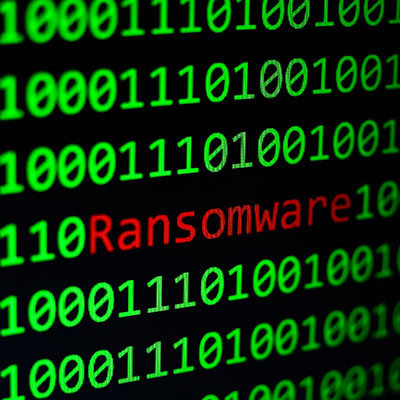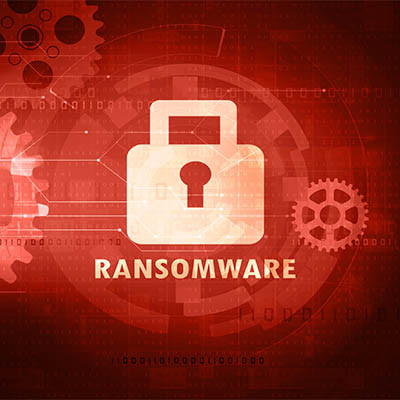k_Street Consulting, LLC Blog
Like many of the past few years, this year has witnessed a significant surge in high-profile ransomware attacks. If you haven't already strategized how to safeguard your business from these threats, now is the time to act. Fortunately, you can take several proactive measures to mitigate the impact of ransomware attacks, and it all starts with preparation.
Cybercriminals are always looking for new ways to trick users and businesses into falling for their traps. With cyberthreats on the rise, and online risks becoming more detrimental to businesses, it’s definitely something that all businesses need to have protections in place for.
A new attack involves ransomware being disguised as some of the most prominent business-related software tools.
Small businesses, like any other entities, can be vulnerable to various computer scams. Scams can have an unsettling effect on how your business runs, as it always keeps doubt—even if you do everything you can to mitigate risks—to whether you are going to be the victim of a horrible Internet-based scam. Here's a list of common computer scams that small businesses should be aware of.
For the most part, Microsoft takes security as seriously as it should, issuing updates and patches to maintain your Windows and Server operating systems. While you can count on receiving these updates for your supported operating systems, what you might not have known is that Microsoft accidentally overlooked a flaw in its own defenses.
Smartphones have managed to hold out against ransomware a bit longer than other hardware and operating systems, but those days are coming to an end. It’s important to remember that the average smartphone is not protected with antivirus software and thus remains threatened by your standard ransomware attacks. It is absolutely critical that your business doubles down on its protection against ransomware, especially in the mobile market.
We all know at this point how dangerous ransomware can be for businesses. It can lock down files, threaten operational continuity, and in some cases subject victims to brutal fines as a result of privacy breaches. One place where you might not expect ransomware to hit, however, is customer reviews, and it all stems from the big question: do you pay to resolve a ransomware attack or not?
Do you ever see an advertisement for a free download of a popular Windows application and think, “Wow, this sure sounds too good to be true!”? Well, it most definitely is, and hackers use these malvertisements to infect computers with malware and other threats. Specifically, malvertising is used to download three different types of malware, all of which can cause harm to unwary businesses.
Network security is challenging for many businesses, and it’s largely because of the large number of various threats that populate the Internet. Some companies simply don’t know what the correct measures to take are, leaving themselves vulnerable to these threats on both a security standpoint and an employee training standpoint. We’ll delve into some of these threats and how they can be addressed.
You’d think that cybercriminals would use ransomware to target high-profile businesses with loads of money to extort, but this is not always the case. Even a small business can fall victim to these particularly devastating threats. Ransomware, just like other threats out there, has continued to evolve and adjust its approaches based on the current cybersecurity climate, so what are some of the latest developments in ransomware?
Ransomware is bad stuff, and it’s only gotten worse with its recent resurgence that aligned with the COVID-19 pandemic. Phishing attacks and other means by which ransomware is commonly spread have used the current atmosphere as a springboard. This makes it even more critical that these kinds of behaviors and attempts can be spotted and stopped.
With so many high-profile ransomware attacks being launched against manufacturers, pipelines, and even hospitals, it’s no surprise that many companies are worried about what the future of this threat means for their organizations. Ransomware poses a serious threat, one that cannot possibly be ignored, so we urge you to take action now so you don’t come to regret it later.
Network security isn’t just for large, high-profile enterprises; even small businesses need to take it seriously. All businesses have something of value to hackers, and if you don’t believe this is the case for your organization, think again. All data is valuable to hackers, and you need to do everything in your power to protect it—especially against threats like Agent Tesla, the latest version of phishing malware designed to steal your data.
It’s no secret that software often does not work as intended. Developers frequently discover bugs and patch them out. The same can be said for security vulnerabilities. Despite the importance of these updates, small businesses often fail to implement these patches and updates in a timely manner, a practice which can lead to more problems down the road.
The situation surrounding the hack against Colonial Pipeline has only become more complex as new information has come to light, each new discovery providing more insights and potentially actionable takeaways. Let’s examine some of the biggest developments surrounding the attack, and what they will likely mean for overall cybersecurity from this point forward.
We’re all familiar with the idea that pop culture has cultivated in our minds about computer hackers, but as it happens, this impression is just one of the many shapes that the modern hacker can take. This kind of closed-off view is dangerously shortsighted, so let’s take a few moments to dig into the kinds of hackers there are, in ascending order of the threat they pose to your business.
If you’re the average business user today, you probably rely on a smartphone to manage much of your life, both personally and in the professional sense. As our phones have become so central to our lives, hackers now have the opportunity to attack through malicious applications. For this week’s tip, we wanted to go over a few ways to tell that an app might be an attack in disguise.
Sometimes a virus or malware infection can be so bad that the best solution is to completely wipe the device and start over with a factory reset. This can be pretty annoying. A new type of malware targeting Android devices just found a way to become even more annoying by being able to withstand a complete factory reset.
In the business world, it’s natural that you encounter those that want to see you fail, but there are also those that simply want to piggyback off your success. In many ways, security threats are a little bit of both, as they can potentially steal your data and leverage it to their benefit, as well as cause harm to your organization. We’ll dig into some of the details of the most common security threats and the risks they cause for your business.
There are many threats out there in the online world that want to see your business suffer, and they will go to any lengths to make it happen. Now, we all have seen the various emails that these hackers and scammers might send to unsuspecting users, but these are only the beginning. The real threat comes from specialized phishing attempts, and they come in many different forms. We’ll help you identify them.
Cryptojacking is one of the upcoming threats that your business should have on its radar in the upcoming years. This process involves a malicious entity installed cryptomining malware on a device without the user’s permission. What this provides the hacker with is a steady stream of income at the expense of the victim’s device. What can you do to keep your business’ devices from falling prey to this?
Countless threats stand between your business and productivity, even if modern security solutions have prevented the majority of them from ever becoming a problem. The fact remains that, unless you’re being proactive about security, your organization could face a considerable challenge in keeping its network secure from intruders. We’ll delve into what some of these threats are, why they are such an issue, and what you can do about them.
Anyone that has spent any time online recently is sure to have come across something they’ve perceived as deplorable. For all the good that it does, some of the most divisive of human interaction happens on the web. Since it really depends on your perspective just how much negativity you take from the Internet, we’ll go through the good, the bad, and the ugly of the Internet to put into perspective just how it affects our lives.
Ransomware has been a major problem for several years now, and 2018 continues to see this threat develop in unforeseen ways. Ransomware is malicious software that can encrypt data located on your device or network, with the encryption key only being available to those who pay a ransom. Ransomware is known today as one of the most pervasive threats out there. We’ll take a look at how ransomware has changed, what the future looks like, and how you can keep yourself safe.
One benefit of the Internet is that, if you search hard enough, you’ll likely find a free tool or app for virtually any common computing task. While certainly advantageous, freeware often comes with a hidden price, like having to also download additional, unwanted software, aka, “crapware.” If this freeware isn’t properly managed, it can wreak havoc on your system.
The challenge for business owners is that there are so many different types of online threats, it borders on impossible to protect themselves from all of them. All of these threats hold limitless possibility to ruin your organization’s operations, either short-term or long-term. One of the most common threats out there is called a rootkit hack, and it’s one that you certainly don’t want to mess around with.
Do you know what a botnet is and how it works? It’s basically a network of infected computers that can be used to perform Distributed Denial of Service attacks, overloading target networks and forcing them to endure downtime. They can also be used to distribute malware and other threats. What’s worse than this, you ask? Hackers can purchase botnets on the black market to use against their targets, but a new type of botnet strain is changing the way this works.
One of the crazy things about hackers is that they will do whatever it takes to ensure that they steal as much information and sensitive data as possible. One of the more innovative ways that hackers spread threats is through spam. Unwanted messages have grown from simple annoyances, to the spread of unwanted software and malware, all the way to sophisticated attacks on targeted individuals known as phishing attacks. Do you have ways to secure your business?
Hundreds of millions of people use wireless Internet connections every day, and as a result, hackers are taking that as a challenge. They are now starting to develop malware that targets people through their routers. Recently, security researchers at Kaspersky Lab have discovered the malware named Slingshot. The code is designed to spy on PCs through a multi-layer attack that targets MikroTik routers. Today we take a look at Slingshot, and other router-based malware and what you can do about it.
A new type of malware is targeting routers in what is considered a large enough threat that even the FBI is addressing it. Even worse, a router isn’t necessarily a device that you think would be vulnerable to attack from a hacker. What can you do to keep your business’ Internet access points secure from hacking attacks? Let’s dig in to the details about what the VPNFilter malware does and how you can address it.
Blockchain technology is mainly known for its use with cryptocurrencies. Even though the values of cryptocurrencies have leveled off after the incredible growth it has sustained over the past few months, users are still attempting to use cryptocurrencies to make a little bit of extra cash on the side. Of course, if there is money involved, you can bet that there will also be criminals and shady activity surrounding it.
Network security is a crucial consideration for every contemporary business owner, as there are just too many threats that originate from an Internet connection to be overlooked. One only has to look at what businesses of all sizes have dealt with, even within this calendar year, to gain an appreciation for how crucial it is that every business owner consider their cybersecurity.
Cybercrime continues to be a major threat to your organization’s security, and there’s no way to really escape it. Hackers are so prevalent on the Internet that you could actually be dealing with attacks from all sides. Phishing in particular has seen a dramatic rise over recent years, and you need to be wary of email scams designed to steal sensitive credentials.
Ransomware has grown in popularity since it first made itself known, but it wasn’t until just last year where it became a powerful presence in the cyber world. Ransomware encrypts the files of its victims and demands payment for the decryption key. In just one year, ransomware stole approximately $1 billion from its victims. Most notable, though, is that these victims were not just from large enterprises, but small companies, too.
As a technology-using business owner, it’s your responsibility to take the security of your organization’s data seriously. This entails knowing the finer details of the many security threats that are out and about on the Internet. Here is a list that includes many of the major threats that you’ll want to keep a lookout for in the business world, and what you can do to stop them.
With all of the major data breaches making the news these days, it’s not very surprising when you hear about a new one. However, what is surprising is just how much the average cost per breach has skyrocketed in recent years. The cost of data breaches is up 29 percent since 2013, which equates to roughly $4 million per data breach.
The ransomware Petya (previously thought to have been eradicated) has unfortunately resurfaced, and it’s brought a friend to the party. Petya was delivered via an email containing an invitation to apply for a job, including the virus in an executable file that was disguised as a PDF job resume. When a hepless user clicked the file, Petya would get to work.
You don’t often hear about mobile operating systems being vulnerable to security threats (desktop vulnerabilities usually hog the spotlight), but when you do, they’re usually major problems that you need to be aware of. One such threat is called “Hummer,” a trojan that has installed unwanted apps and malware to more than a million phones all over the world.
Hackers of all shapes and sizes use brute force attacks to gain access into accounts and infrastructures, but do you know how they work and what your business can do to protect against them? Failing to understand brute force attacks could put sensitive information in the crosshairs of hackers, and leave it vulnerable to ongoing attacks.
 Malware has traditionally targeted industries that are exceptionally profitable. For example, hackers like to target retailers for their wealth of financial credentials. One of the most profitable industries, entertainment, is also subject to similar torment, including Steam, the PC gamer’s most valuable tool for gaming binges.
Malware has traditionally targeted industries that are exceptionally profitable. For example, hackers like to target retailers for their wealth of financial credentials. One of the most profitable industries, entertainment, is also subject to similar torment, including Steam, the PC gamer’s most valuable tool for gaming binges.
 Did you know that some of the most successful hackers actually know very little about computer coding? In many cases, a hacker simply tricking someone into handing over their personal information works out even better for them. This is a tactic known as social engineering, and the only way to defend against it is to stay one step ahead of the hacker’s devious plans.
Did you know that some of the most successful hackers actually know very little about computer coding? In many cases, a hacker simply tricking someone into handing over their personal information works out even better for them. This is a tactic known as social engineering, and the only way to defend against it is to stay one step ahead of the hacker’s devious plans.
 Hackers are notorious for exploiting technology for their benefit, but users often forget that mobile devices are exploited just as often as desktops and workstations; perhaps more so, due to their higher exposure to wireless networks that may not be secure. One of the greatest threats to mobile devices is the botnet, which is designed to enslave a device and have it turn on its owner (and the entire Internet).
Hackers are notorious for exploiting technology for their benefit, but users often forget that mobile devices are exploited just as often as desktops and workstations; perhaps more so, due to their higher exposure to wireless networks that may not be secure. One of the greatest threats to mobile devices is the botnet, which is designed to enslave a device and have it turn on its owner (and the entire Internet).
 There’s a wicked string of malware on the Internet that locks users out of their browser and directs them to call a phone number. That phone number reaches hackers who have set up a subterfuge as an IT support company. If this happens to you, even if you are in the middle of something important, do not call the phone number.
There’s a wicked string of malware on the Internet that locks users out of their browser and directs them to call a phone number. That phone number reaches hackers who have set up a subterfuge as an IT support company. If this happens to you, even if you are in the middle of something important, do not call the phone number.
 It’s the time of year when we reflect on scary things. For an IT company, it doesn’t get much scarier than an organization’s network getting slammed with a malicious computer virus. There are a variety of really bad viruses out there, each one with its own unique ability to cause some scary results. The way we see it, each computer virus is kind of like a classic monster.
It’s the time of year when we reflect on scary things. For an IT company, it doesn’t get much scarier than an organization’s network getting slammed with a malicious computer virus. There are a variety of really bad viruses out there, each one with its own unique ability to cause some scary results. The way we see it, each computer virus is kind of like a classic monster.
 The Internet is chuck full of malicious activity, but sometimes the difference between legitimate and illegitimate websites is so fine that it’s nigh impossible to discern the two. Well, we might be in luck; as it turns out, around 95 percent of the dangerous websites on the Internet can be identified by the top-level domains they use.
The Internet is chuck full of malicious activity, but sometimes the difference between legitimate and illegitimate websites is so fine that it’s nigh impossible to discern the two. Well, we might be in luck; as it turns out, around 95 percent of the dangerous websites on the Internet can be identified by the top-level domains they use.
 Can you believe it’s already been two years since Cryptolocker, a particularly nasty strain of ransomware, was released into the online environment? By encrypting files on a victim’s computer, and forcing them to pay a fee for their safe return, Cryptolocker has been a significant threat to both business and personal environments. Now, however, a particular strain of Cryptolocker is making gamers look like cybersecurity rookies.
Can you believe it’s already been two years since Cryptolocker, a particularly nasty strain of ransomware, was released into the online environment? By encrypting files on a victim’s computer, and forcing them to pay a fee for their safe return, Cryptolocker has been a significant threat to both business and personal environments. Now, however, a particular strain of Cryptolocker is making gamers look like cybersecurity rookies.
 You might recall how the Silk Road, an illegal online drug market, was recently shut down. Similar to the Silk Road, there’s another distributor of sensitive information out there; this one dealing with zero-day vulnerabilities. These types of cyber threats sell for top-dollar, and hackers are willing to pay in order to access your network.
You might recall how the Silk Road, an illegal online drug market, was recently shut down. Similar to the Silk Road, there’s another distributor of sensitive information out there; this one dealing with zero-day vulnerabilities. These types of cyber threats sell for top-dollar, and hackers are willing to pay in order to access your network.
 There are a lot of different threats out there: Viruses, malware, spyware, adware, the list goes on. While all of these threats are certainly problematic, some are more dangerous than others. In particular, advanced malware can be exceptionally devastating if they manage to inflict damage on your technology.
There are a lot of different threats out there: Viruses, malware, spyware, adware, the list goes on. While all of these threats are certainly problematic, some are more dangerous than others. In particular, advanced malware can be exceptionally devastating if they manage to inflict damage on your technology.
 As seen by the recent Superfish app debacle, software that comes preinstalled on a new PC shouldn’t always be trusted. Most of the time, the innate software on a device can be trusted; but the Superfish application is an exception. This app, which came preinstalled on new Lenovo PCs between the months of September and December of 2014, can potentially compromise the security of your machine.
As seen by the recent Superfish app debacle, software that comes preinstalled on a new PC shouldn’t always be trusted. Most of the time, the innate software on a device can be trusted; but the Superfish application is an exception. This app, which came preinstalled on new Lenovo PCs between the months of September and December of 2014, can potentially compromise the security of your machine.
 A cyber espionage campaign called "Sandworm" has been discovered recently. The hacking attack, said to be based in Russia, has been targeting government leaders and organizations since as early as 2009. The researchers responsible for the discovery, iSight Partners, came to this conclusion after examining the code used in the campaign.
A cyber espionage campaign called "Sandworm" has been discovered recently. The hacking attack, said to be based in Russia, has been targeting government leaders and organizations since as early as 2009. The researchers responsible for the discovery, iSight Partners, came to this conclusion after examining the code used in the campaign.
 Working with technology can get pretty complicated and technical at times. We're here to help. We've got plenty of technology tips to share with the world, and we're going to unleash them on you once a week. For more helpful tech tips, search our previous blog articles. This week's tip will help you spot a nasty APT hack on your company's network.
Working with technology can get pretty complicated and technical at times. We're here to help. We've got plenty of technology tips to share with the world, and we're going to unleash them on you once a week. For more helpful tech tips, search our previous blog articles. This week's tip will help you spot a nasty APT hack on your company's network.
 Your office is likely full-to-bursting with devices utilizing USB technology. It's been a popular way to connect external devices to PCs since the 1.1 version was released in 1998. However, it may be the technology's popularity that will cause its downfall as hackers develop ways to use the device to their advantage.
Your office is likely full-to-bursting with devices utilizing USB technology. It's been a popular way to connect external devices to PCs since the 1.1 version was released in 1998. However, it may be the technology's popularity that will cause its downfall as hackers develop ways to use the device to their advantage.
 When it comes to hackers, they are shrouded in darkness and treachery. They lurk in the shadows, waiting for us to make a mistake and to steal our life savings, or other equally nefarious things. But there are a few assumptions that they make concerning their prey, and they wish to hide these from us at all costs.
When it comes to hackers, they are shrouded in darkness and treachery. They lurk in the shadows, waiting for us to make a mistake and to steal our life savings, or other equally nefarious things. But there are a few assumptions that they make concerning their prey, and they wish to hide these from us at all costs.
 Two weeks ago, the National Communications Administration managed to weaken a set of malware designed to steal banking and personal credentials from unsuspecting users. They warned the world that GameOver Zeus and Cryptolocker ransomware would be back with a vengeance, and that immediate action could prevent a whole lot of pain later.
Two weeks ago, the National Communications Administration managed to weaken a set of malware designed to steal banking and personal credentials from unsuspecting users. They warned the world that GameOver Zeus and Cryptolocker ransomware would be back with a vengeance, and that immediate action could prevent a whole lot of pain later.
 Look out, users of Windows; the Greek god of thunder is angry, and he's sent the Zeus family of malware out into the world. The one in question, GameOver Zeus, is particularly nasty. Thankfully, the Department of Homeland Security, Federal Bureau of Investigation, and Department of Justice managed to find a way to disrupt it, but that doesn't mean that GameOver Zeus is out of the game - in two weeks, the threat will return with a vengeance.
Look out, users of Windows; the Greek god of thunder is angry, and he's sent the Zeus family of malware out into the world. The one in question, GameOver Zeus, is particularly nasty. Thankfully, the Department of Homeland Security, Federal Bureau of Investigation, and Department of Justice managed to find a way to disrupt it, but that doesn't mean that GameOver Zeus is out of the game - in two weeks, the threat will return with a vengeance.



















































